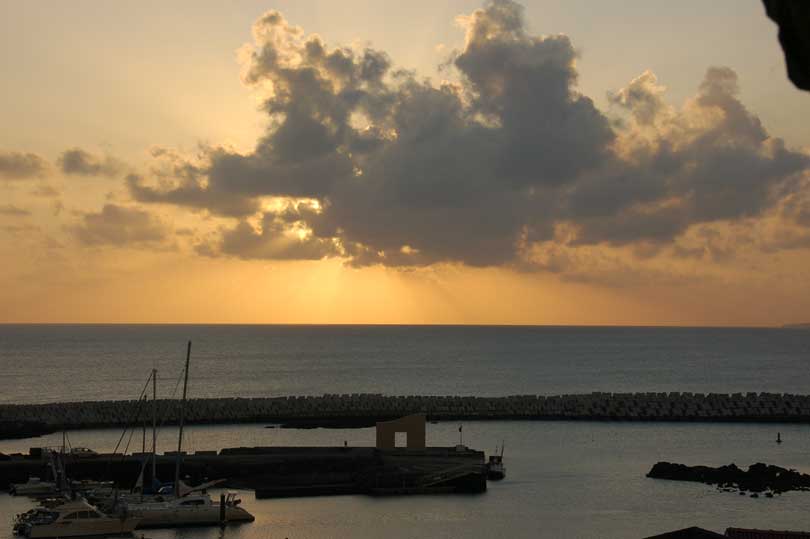2008's main holiday was in The Azores - spread over 2 islands, Sao Miguel and Pico.
We chose The Azores because we really enjoyed Madeira and The Azores have the reputation of being good for whale watching but we had no real idea what to expect. Having checked the internet we found Archipelago Azores and sent Diane and team a list of what we thought we wanted. Delighted to say that they came up trumps and off we went.
This page covers our second week. Click here for Sao Miguel page.
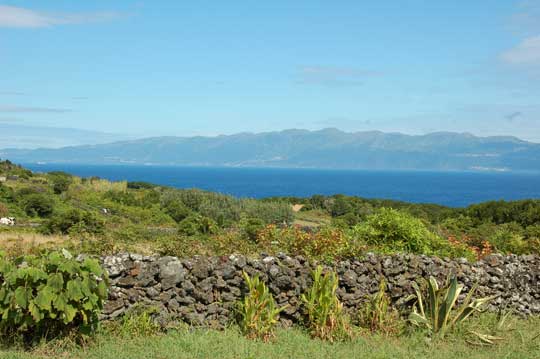
Pico is the second largest island in the Azores and very different to Sao Miguel. Our accommodation was at the eastern tip of the island so we drove to the back of beyond and kept going (and going). We stayed at O Zimbreiro (Juniper House).
Our room was just like a beach hut but bigger. The surrounding landscape was lovely, the stars at night brilliant, the views were spectacular and Jeremy and Anne-Lise looked after us very well, both of them being very good cooks / chefs. The pool was chlorine free (bit chilly as the week progressed) and tea and coffee was served regularly with a smile!
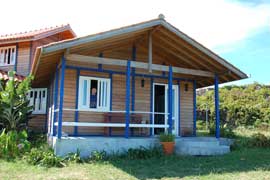
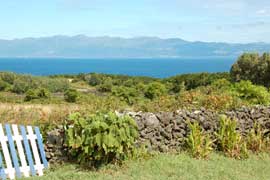
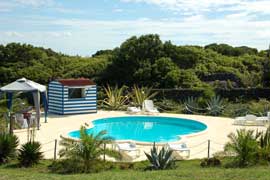

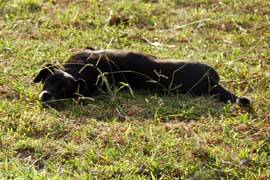
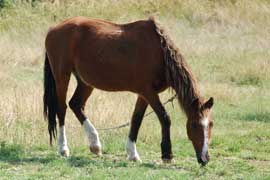
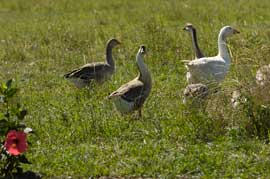
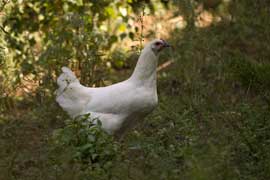
Saturday afternoon we had a quick drive around to orientate ourselves and Sunday off we went to try and find some whales and dolphins. Joana was our marine biologist and on our various trips we had either Pedro or Marco as our skipper - we even had Serge (boss) himself on day acting as skip. They worked really hard to find cetaceans for us to see. Sunday was very grey and wet so not particularly pleasant and we got pretty damp. The whales must have thought the weather was pretty horrid too as they were very well hidden. We did see some Risso's dolphins for the first time though so that was nice. They just coasted up and down, back and forth - apparently this is normal behaviour! They are known locally as Michael Jackson dolphins as they change from black to white as they get older and don't have the usual pointy nose that other dolphins have.
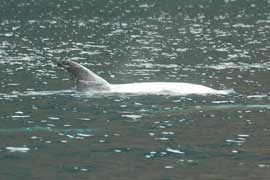
Risso's Dolphin
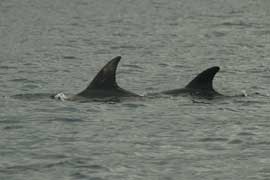
Risso's Dolphin
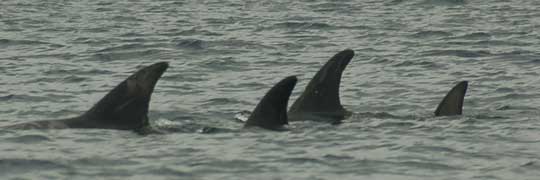
Risso's Dolphin
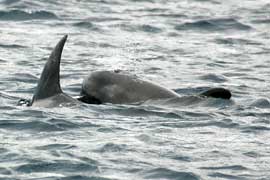
Risso's Dolphin
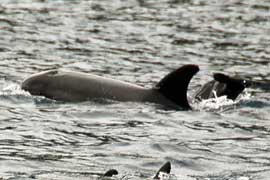
Risso's Dolphin
We went out with Espaco Talassa - a great firm that believes in conservation first and entertaining the tourists second - just our sort of thing! There was a film crew there while we were, trying to get a film clip of dolphins bow riding. The film will be called Ocean(s?) and it's taken 4-5 years to put together so far and goodness knows how many £millions all for about an hour or two's viewing! It should be in the cinemas next year.
The same firm have a really good cafe / restaurant / hotel next to the whale watching centre so that was a good place to sit and dry out while having something good to eat.
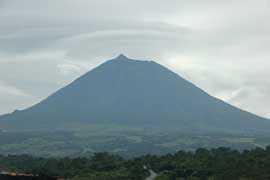
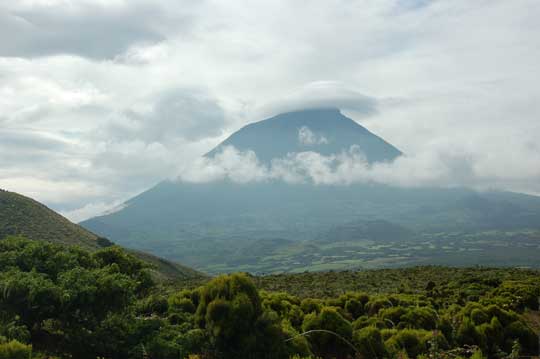
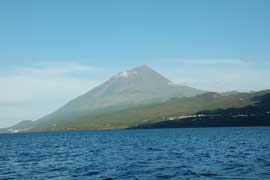
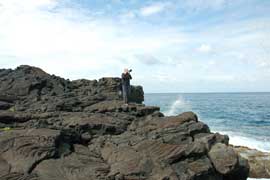
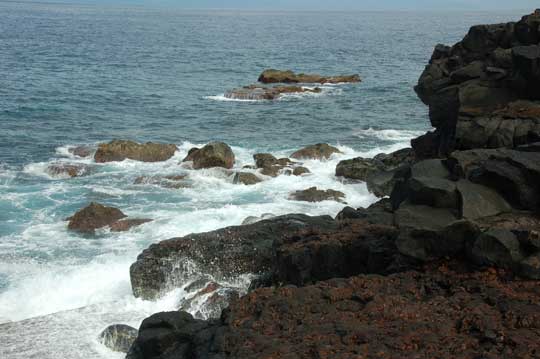
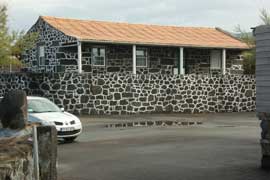
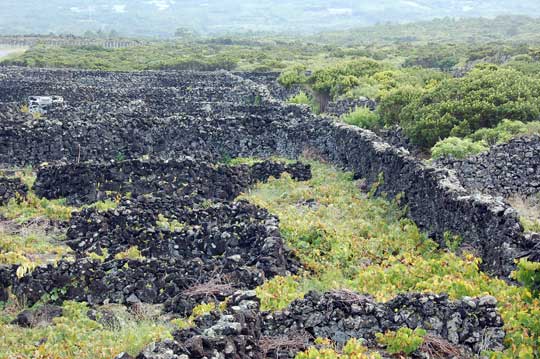
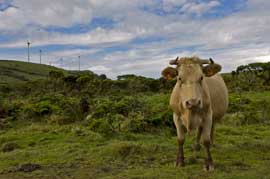
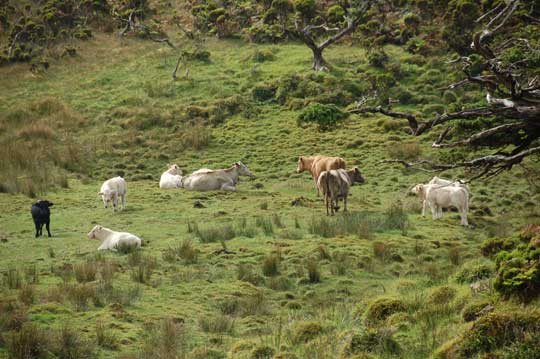
Whereas most of the cows in Sao Miguel were black and white, those in Pico were a creamy white / pale brown colour. There were black and white ones as well but nowhere near as many.
Another difference was the lack of hydrangea hedges. Again, there were a few but not as many apart from the main roads where the hedges were really colourful.
The lakes were also smaller and we didn't find any caldeiros.
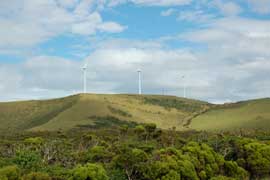

It's probably a good time to introduce you to Washington - our car on Pico. A Renault Megane so a big improvement on the Skoda from last week. We called him Washington as the letters in his registration number were DC.

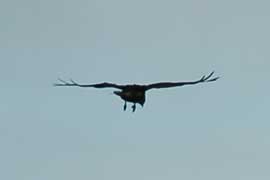

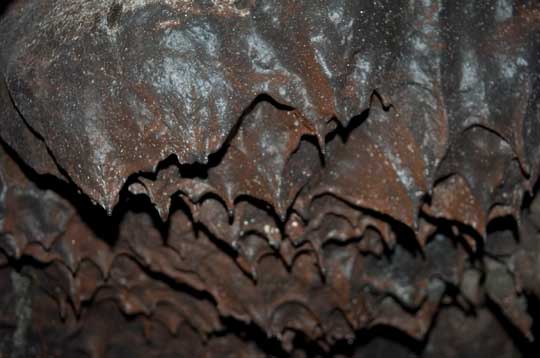
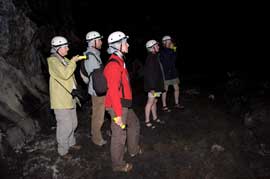
The stalactites on the left are turned the red / brown colour by iron coming in from above. Although there are earthquakes in Pico (last big one 1998), human activity, especially road works and building works, does far more damage to the cave structures because of the ongoing pounding etc.
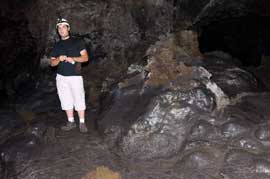
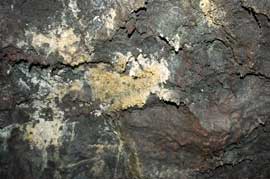
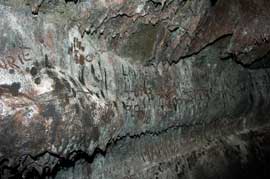
The graffiti on this photo was a rare sight in the Azores where we saw very little graffiti at all - a welcome change from most parts of Western Europe that we've visited.
The photo on the right is one of the main lava flow tunnels / roads. It reminded us of a Luge run with the steep slopes at the corners.
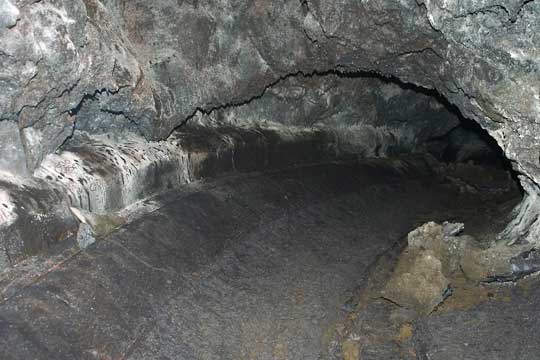
This was a great experience. The walk lasted just short of an hour and we were really glad we'd got good walking boots on as it was very tricky underfoot. The lack of electric lights made it more interesting and it was fascinating to have the various rock formations pointed out by our guide with the explanations as to how they came to be as they are.
We travelled back to base on the south coast road, calling in to take a photo of a more traditional windmill en route.
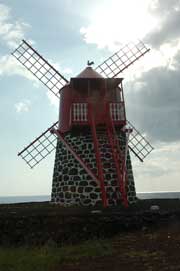
Back on the water the next couple of days (when we weren't lolling around by the pool). The sea was a bit rough on the Tuesday and we got thoroughly drenched (but managed to keep the cameras dry(ish)).
We didn't see any whales on Tuesday but did see some very active Common Dolphin and some Atlantic Spotted Dolphin.
The latter were almost by Faial (another island) so we were very late back and the crew had to radio the shore to ask them to contact Jeremy to let him know we'd be late back for tea!
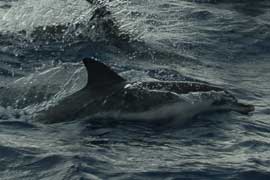
Atlantic Spotted Dolphin
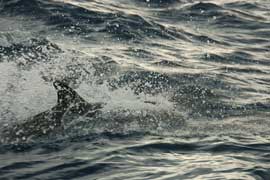
Atlantic Spotted Dolphin
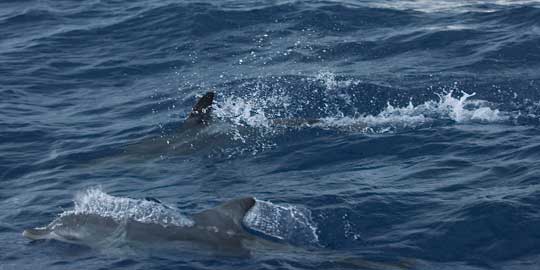
Atlantic Spotted Dolphin
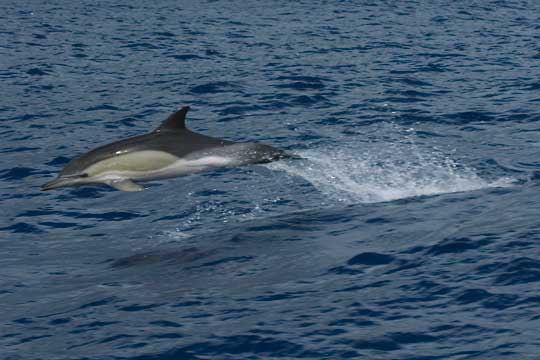
Common Dolphin
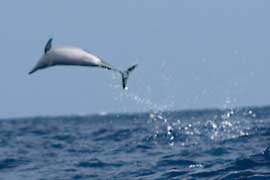
Common Dolphin
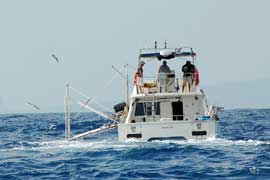
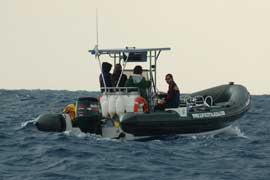
We also visited the lookout. The Azores use land based lookouts with very powerful binoculars to spot whales. The view is pretty much from one end of the island to the other all along the south coast.
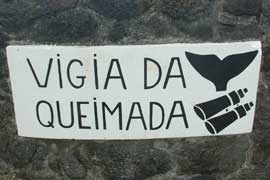
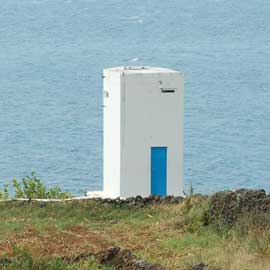
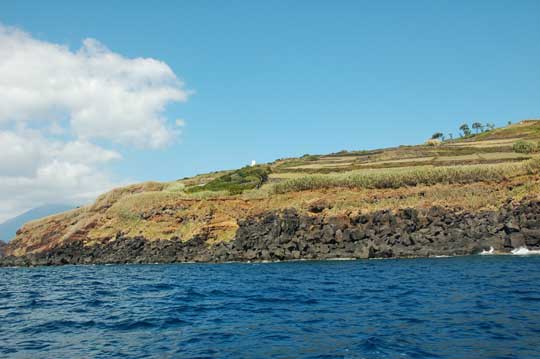
The white dot on the slope of the hill is the tower so you can see how tiny it really is.
The tower has two floors and I think I'd get claustrophobic stuck in the tower all day. Jonathon could hardly stand up and doesn't like ladders so it definitely wouldn't do for him!
Our third (and we thought final) time out on the boats from Pico was the most successful (and calmest to date, weatherwise). We had great views of dolphins - Risso's, Common and Bottlenose (Flipper types). We also came across a group of 4 juvenile male sperm whales - quite unusual so a treat. One of them was more "accommodating" than the others (or perhaps he was just showing off?)
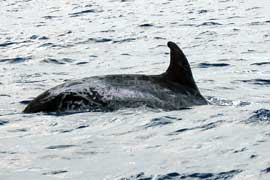
Risso's Dolphin
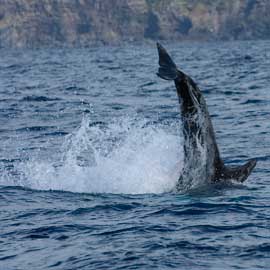
Risso's Dolphin
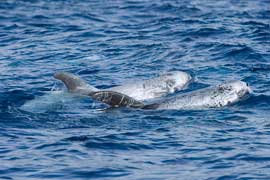
Risso's Dolphin
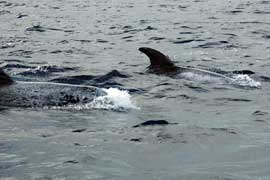
Risso's Dolphin
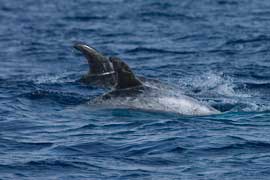
Risso's Dolphin
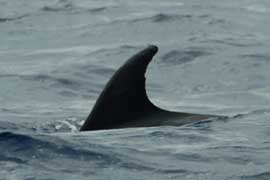
Bottlenose Dolphin
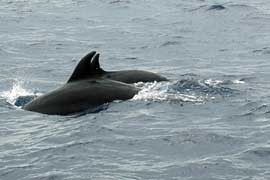
Bottlenose Dolphin
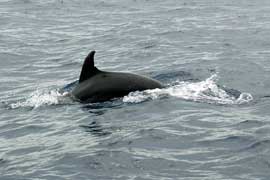
Bottlenose Dolphin
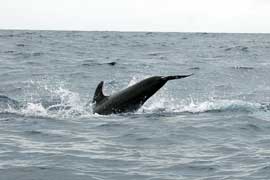
Bottlenose Dolphin
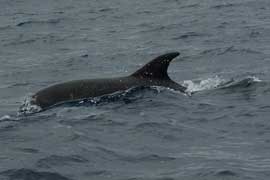
Bottlenose Dolphin
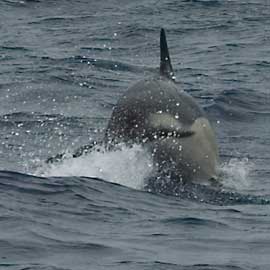
Common Dolphin

Common Dolphin
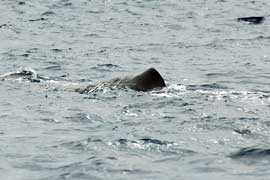
Sperm Whale
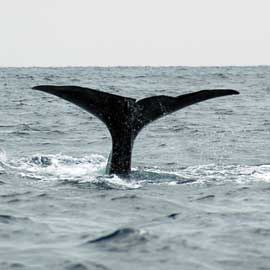
Sperm Whale
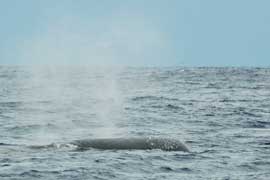
Sperm Whale
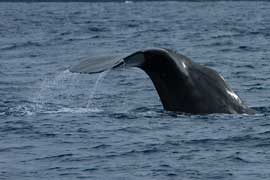
Sperm Whale
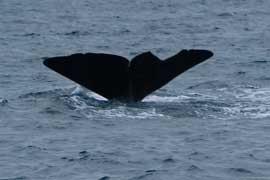
Sperm Whale
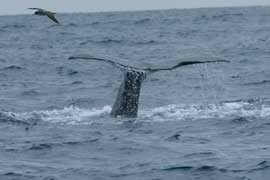 Sperm Whale
Sperm Whale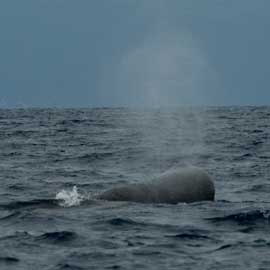
Sperm Whale
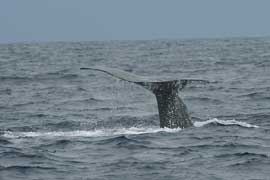
Sperm Whale
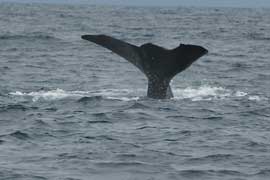
Sperm Whale
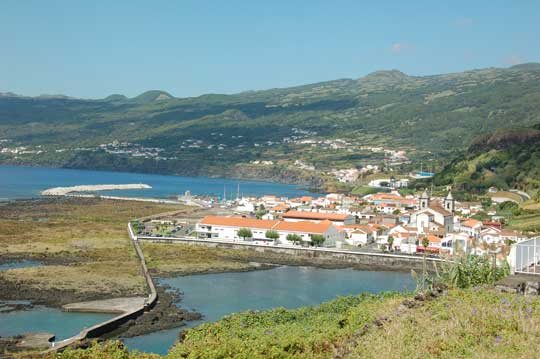
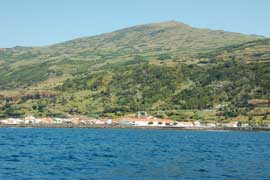
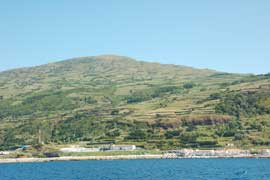

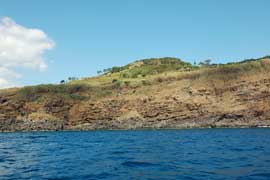
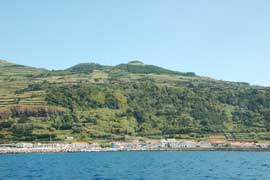
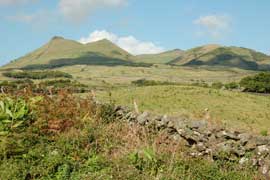
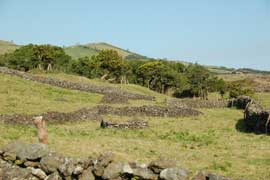
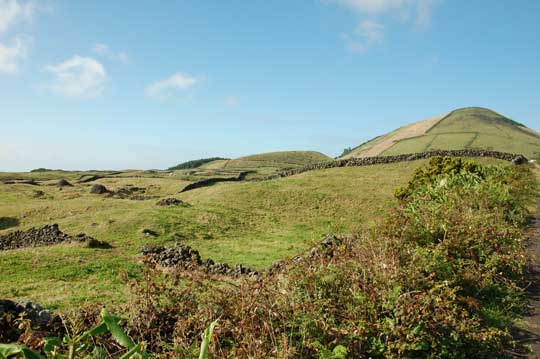
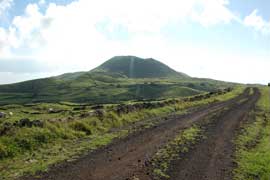
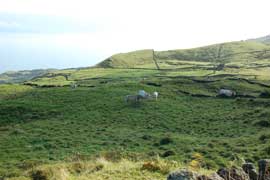
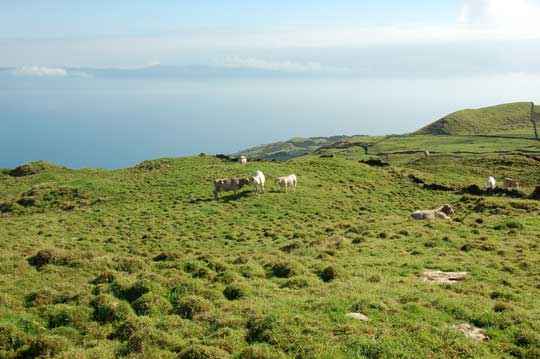
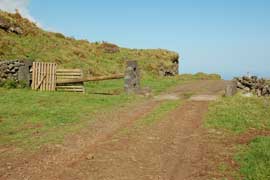
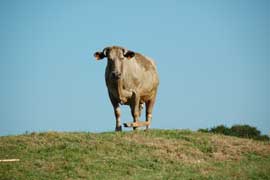
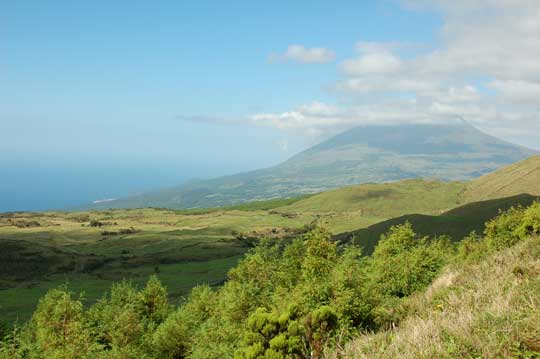
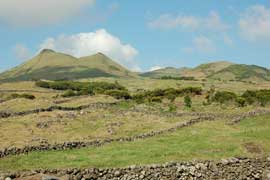

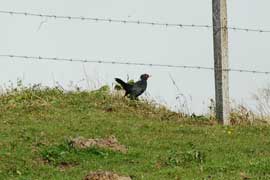
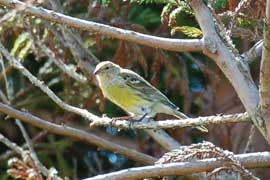

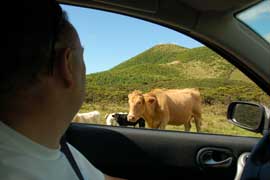
At times we questioned who was watching who?
It seemed odd to see the sea behind the cows but at one time we were high enough to see both coast lines. The darker outline behind them is Sao Jorge island.
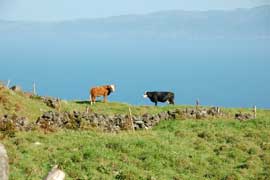
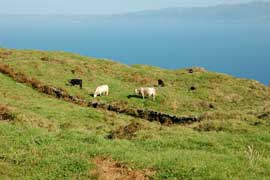
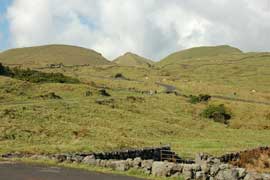
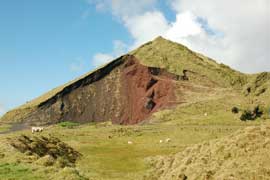
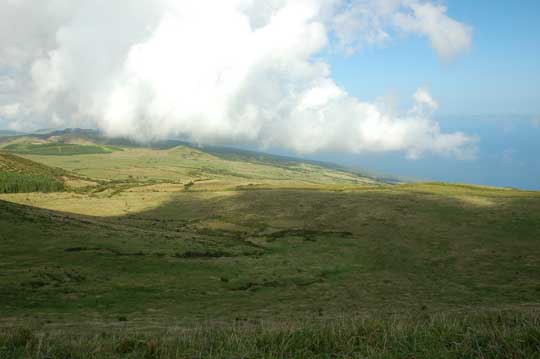
The clouds began to gather when we were a bit higher up. It's weird to watch them creeping up the hill sides.
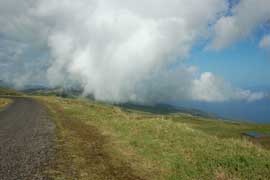
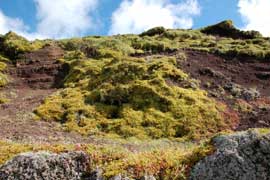
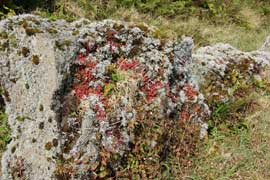
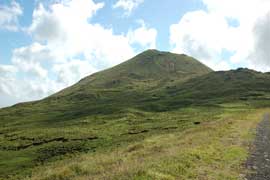
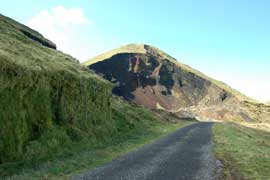
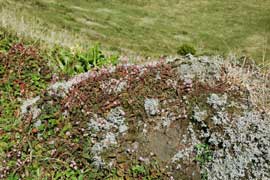
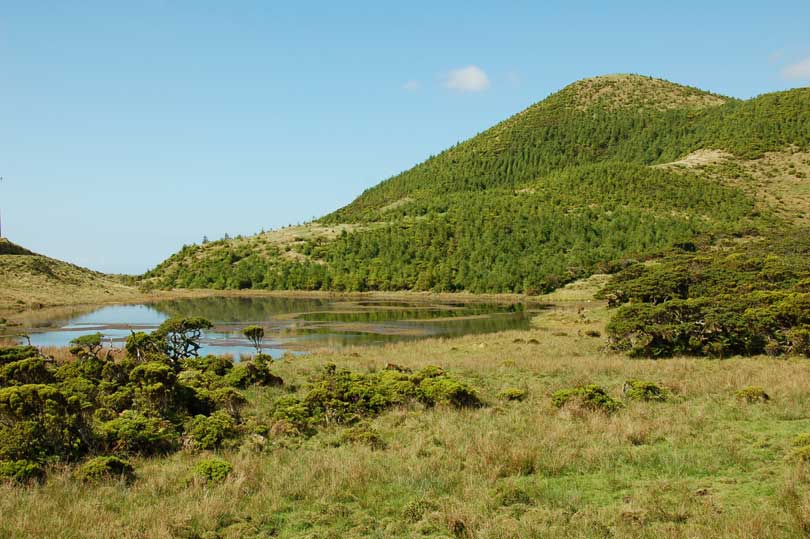
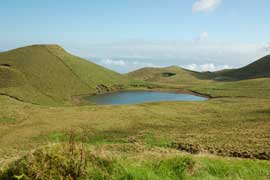
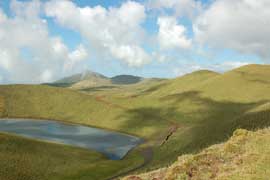

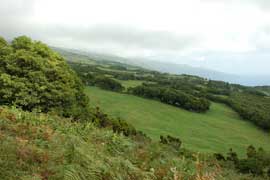
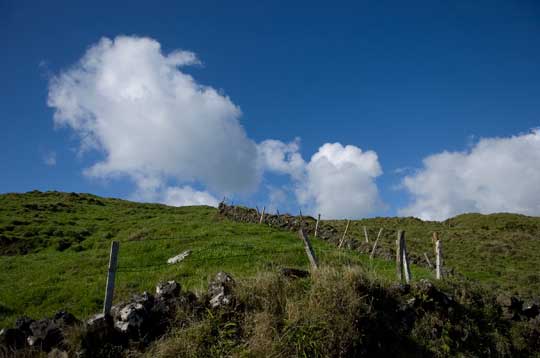
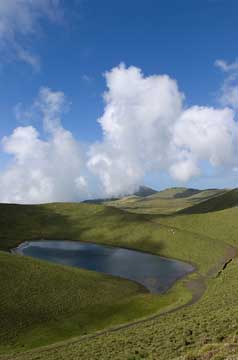
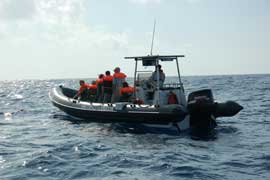
Come lunchtime, the lure of the sea was too strong to resist so we popped back to Lajes to see if anyone had cancelled. Thankfully, 3 Brits had so we could have 2 of those places.
The viewing highlight was Short Finned Pilot Whales. There was a large group of them, males, females, juveniles and even a baby. It was lovely to see. A special treat was the amount of activity. Normally you don't see tails or jumps but the youngsters in this group seemed happy to show off occasionally. They even did some spyhopping - which basically means popping their head out to have a look at us!
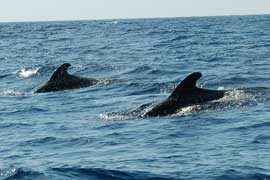
Pilot Whale
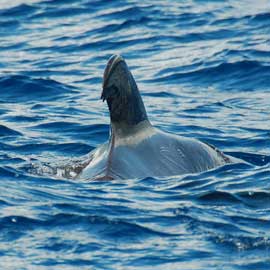
Pilot Whale
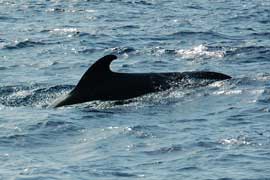
Pilot Whale
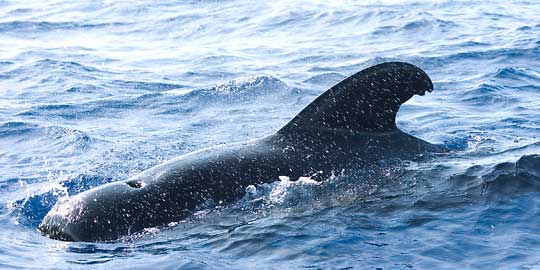
Pilot Whale
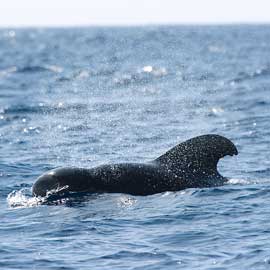
Pilot Whale

Pilot Whales
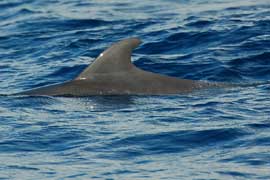
Pilot Whale
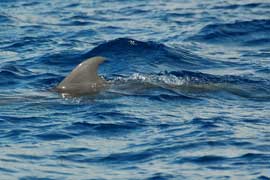
Pilot Whale
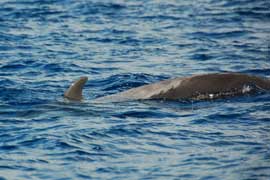
Pilot Whale
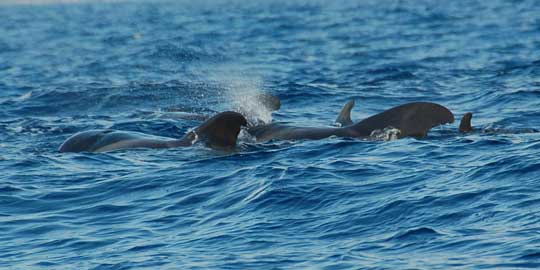
Pilot Whales
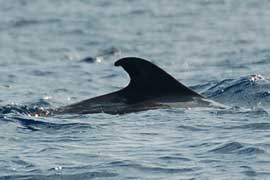
Pilot Whale
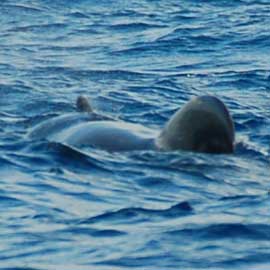
Pilot whale
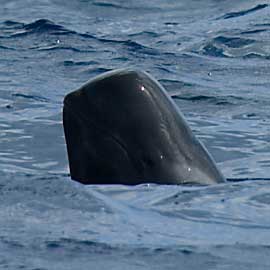
Spyhopping
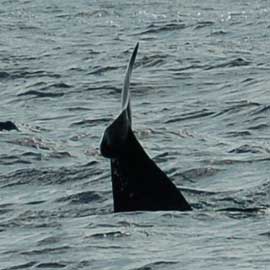
Pilot Whale
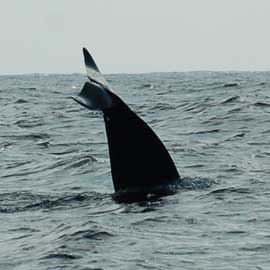
Pilot Whale
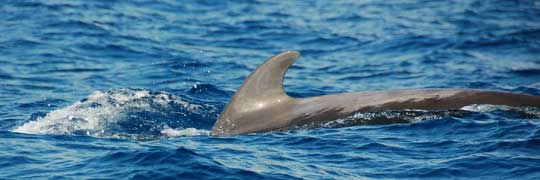
Pilot Whale
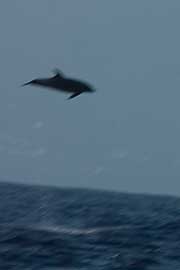
Bottlenose dolphin

As you can see from above, Thursday was a lovely, calm, warm, sunny day. Friday came along and was very different. The sea was heavy and it was quite windy. We'd hitched a ride on the "Swimming with Dolphins" boat - not to swim, just to watch the dolphins. It was more than a bit bumpy but we did see about 200 Common Dolphin hunting which was great.
We also saw a few Risso's Dolphins but by then we'd put the cameras away to try and prevent them getting any more sea water in them!
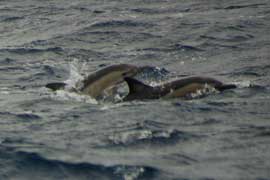
Common Dolphin
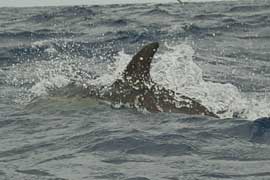
Common Dolphin
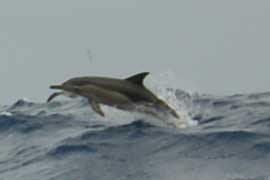
Common Dolphin
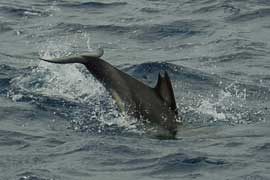
Common Dolphin
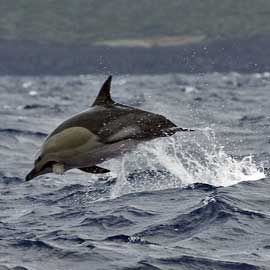
Common Dolphin
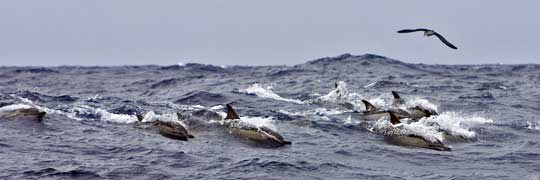
Common Dolphin
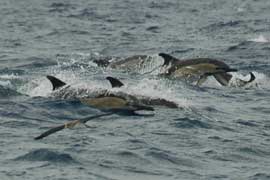
Common Dolphin
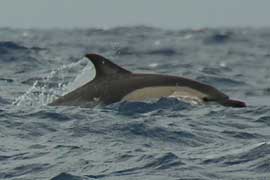
Common Dolphin
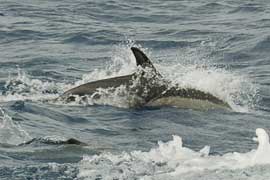
Common Dolphin
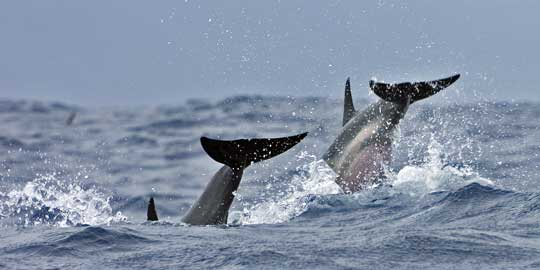
Common Dolphin
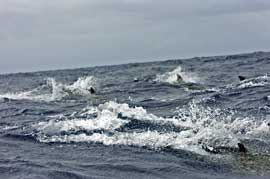
Common Dolphin
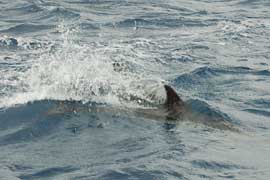
Common Dolphin
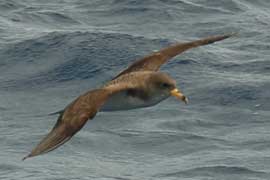
Cory's Shearwater
Finally, we had to say goodbye and head back to the airport. The photo below was taken on the Thursday - we'd left before sundown on the Friday - back to Sao Miguel for the transfer back to London.
We had a great time and would love to come back, especially to Pico. One of our main reasons for visiting the Azores was for the whales and dolphins and, as you can see, we were very lucky in the number of animals we managed to see. There's definitely more to do on Sao Miguel, it's a bigger island, more set up for tourists (but not too many signposts so not everyone can find the best attractions!), more variety of scenery etc but the whale watching experience out of Pico was brilliant. The baleen whales visit in the Spring so perhaps we need to get something arranged for then.
